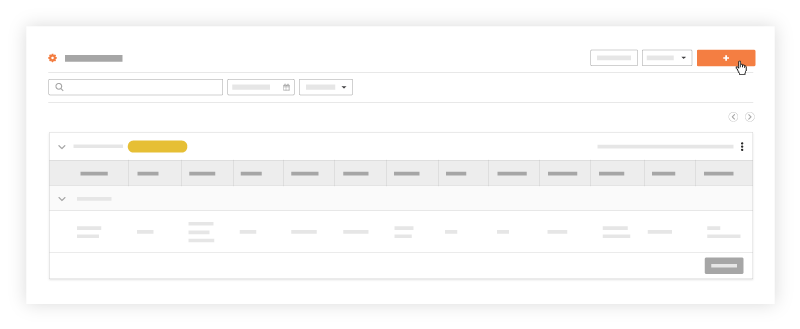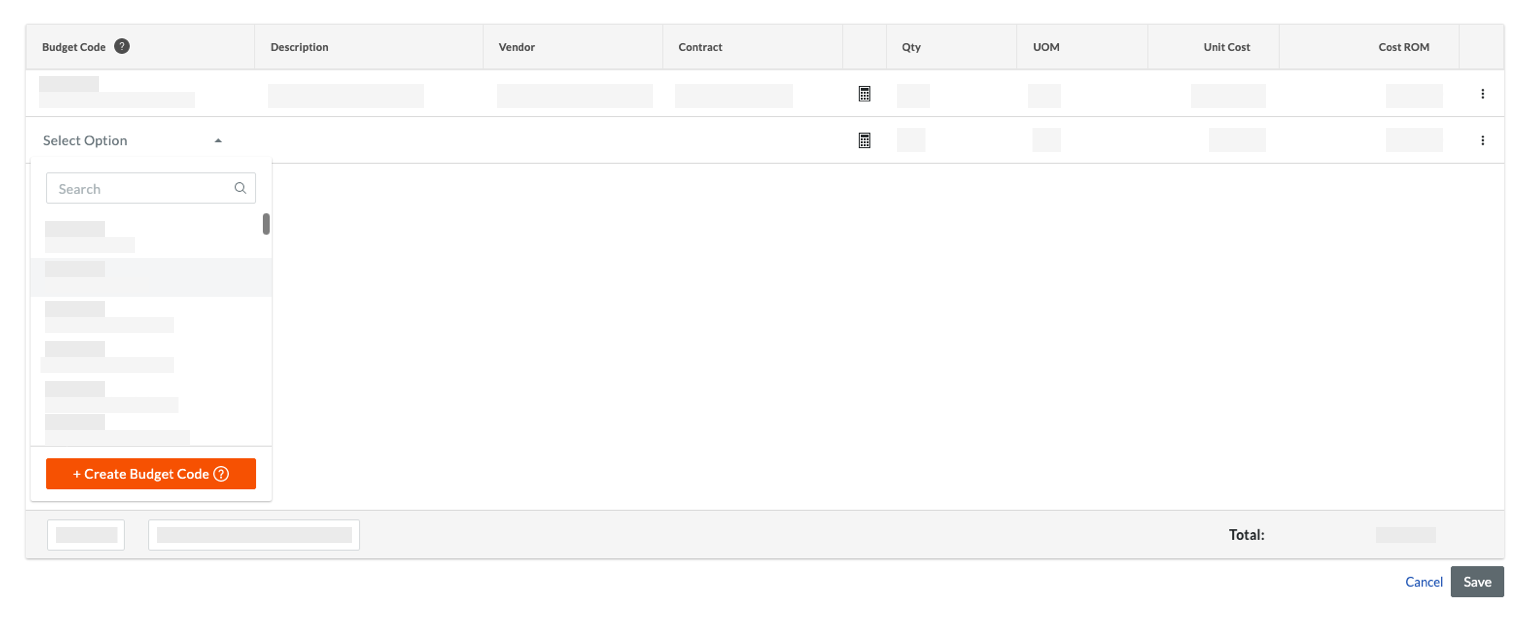Create a Change Event
| Back | Current Lesson - 4/29 | Next |
On a construction project, a change event is any change that affects the original scope of a construction project. It can be any event that affects the scope of the work to be completed, causes a change to the project schedule, or results in unexpected costs. With Procore, you can create a change event to record the event that establishes the need for a change order. It allows your project's team members and stakeholders to prepare for a cost change, before it becomes an actual cost.
Example 1: Create a Change Event to Establish a Change Order
A change event can come from many sources and is the event that establishes the change order process. Examples include:
- Accommodating an owner request.
- Accounting for a design flaw.
- Addressing an unforeseen issue caused by a vague document or specification.
Example 2: Create a Change Event to Document a Subcontractor Backcharge
A change event can also be used to document a project condition that resulted in a backcharge. A backcharge refers to an amount of money that a general contractor holds back or from a subcontractor as a consequence for performing incomplete or defective work. From a general contractor's perspective, the intent of a backcharge is to recover the unforseen expenses incurred when performing corrective actions that the subcontractor was contractually obligated to perform.
To ensure that you have fully documented the conditions that resulted in the backcharge, you can create a change event. Common scenarios for documenting backcharges this way include:
- Repairing something that a subcontractor damaged.
- Cleaning up an area that the subcontractor was obligated to clean.
- Replacing defective materials provided by the subcontractor.
- Reinstalling an incorrect installation performed by a subcontractor.
- Bringing a neglected issue into compliance with safety regulations.
- Providing unforeseen equipment rental and use costs.
With the Change Events tool in Procore, you can create a change event to record a reason for a change in a construction project. They also prepare project team members and stakeholders for the potential costs associated with the change event. After a change event is created, you can then send a Request for Quote (RFQ) to your subcontractors. Subcontractors can then respond to RFQs (or a general contractor can enter a response to an RFQ on the subcontractor's behalf). Included in the RFQ response is all the required documentation related to the change event's potential cost and schedule impact. After your subcontractor's RFQs responses are reviewed, your project team has the information it needs to proceed with creating a Potential Change Order (PCO).
Create a Change Event
- Navigate to the project's Change Events tool.
- Click + Create.

- Under General Information, enter the following:
- Origin. Select the Procore tool where the change event originated from the drop-down menu. For example, Observation, RFI, Meeting, or Instruction.
- Change Event #. Procore automatically assigns numbers to change events in ascending order.
Notes:- The default numbering scheme is 001, 002, 003, and so on.
- You can customize the numbering scheme for the change events on your project at any time by typing an alphanumeric numbering scheme over the default value. For example, CE001 or CE1000.
- After customizing the numbering scheme, Procore will assign numbers in ascending order to new change events using the new scheme.
- Title. Enter a descriptive title for the change event.
- Status. Select the status of the change event from this list:
Note: To configure custom statuses for change events, see Set the Default Change Management Configurations.- Open. Select Open to indicate the change event is active while users are managing items associated with the event. This is the default status. For example, budget modifications, Commitment Potential Change Orders (CPCOs), Prime Potential Change Orders (Prime PCOs)), and Request for Quotes (RFQs).
- Closed. Select Closed after all required change orders and RFQs have been created and the change event is considered complete.
- Pending. Select Pending if the change event requires approval before it can be closed out.
- Void. Select Void to indicate no change resulted from the event.
Notes:- It is recommended that you choose this status instead of deleting the change event. This ensures the system keeps a record in the Change Events log page for future reference.
- To view voided events, select Void or All (Include Void) from the Add Filters menu on the Change Events log page.
Important
Scope. Select one of the available options from the list. This field is VERY IMPORTANT and determines whether or not a Pending Change Event will show up in column 13 Approx COs (Out of Scope) of the budget.- In Scope (Does not show in budget): Select this option if the cost of the change event is already accounted for within the current budget line item total. For example, actual costs from de-watering or concrete contracts are often added to a base contract value on a monthly basis. Because the change orders are still working up to the estimated total cost for that budget line, we do not want the budget to be increased for these change orders.
- Out of Scope (shows in Budget): Select this option if the cost of the change is NOT accounted for within the current budget line item total. For example, changes that are a result of Instructions, Drawings,or design changes are generally Out of Scope.
- TBD (Does not show in budget): Select this option if you are unsure whether or not the change should modify the budget. Be sure to change this to In Scope or Out of Scope before Closing the CE.
- Notes:
- The scope setting affects the default Revenue ROM for new line items added to this Change Event. Revenue ROM for each line item can be viewed and edited on the save/view mode of the change event, or on the Detail tab of the Change Event tool.
- If the scope is updated after the Change Event is created, a checkbox will appear, giving you the option to “Update the Revenue ROMs” for all existing line items to match the defaults for that scope. This box is checked by default, uncheck it if you wish to preserve your existing Revenue ROM values.
- If the change event has a mix of different scopes, select the scope that applies to the majority of line items. For example, if the Change Event has 10 line items, and 8 line items are Out of Scope and 2 line items are in scope, set the change event scope to 'Out Of Scope' so all ten line items default to Automatically use Latest Cost. Then save and edit the Revenue ROM on the two items that are in scope line items to No revenue expected.
- Type. Select TBD, Allowance, Contingency, Owner Change, or Transfer to indicate the type of cost you are preparing for.
Note: To configure types for change events, see Set the Default Change Management Configurations. - Change Reason. Select a change reason from the drop-down menu.
Note: To configure change reasons for change events, see Set the Default Change Management Configurations. - Description. Describe the event that may result in a change in costs.
- Attachments. Attach any relevant files.
- Prime Contract (For Markup Estimates). Select a prime contract to indicate which prime contract’s markup settings should be used to calculate the markup on ROMs. This field will default to the lowest-numbered prime contract.
- (Optional) If you want to add line items to your change order now, follow the steps in Add Change Event Line Items.
- Click Create.
Add Change Event Line Items
Note: If the combination of the sub job, cost code, and cost type are non-budgeted, a pop-up will appear asking to confirm to add these line items to the budget. If OK is selected, these line items will be added directly to the Budget with a "?" next to each line item. See Add a Partial Budget Line Item.



